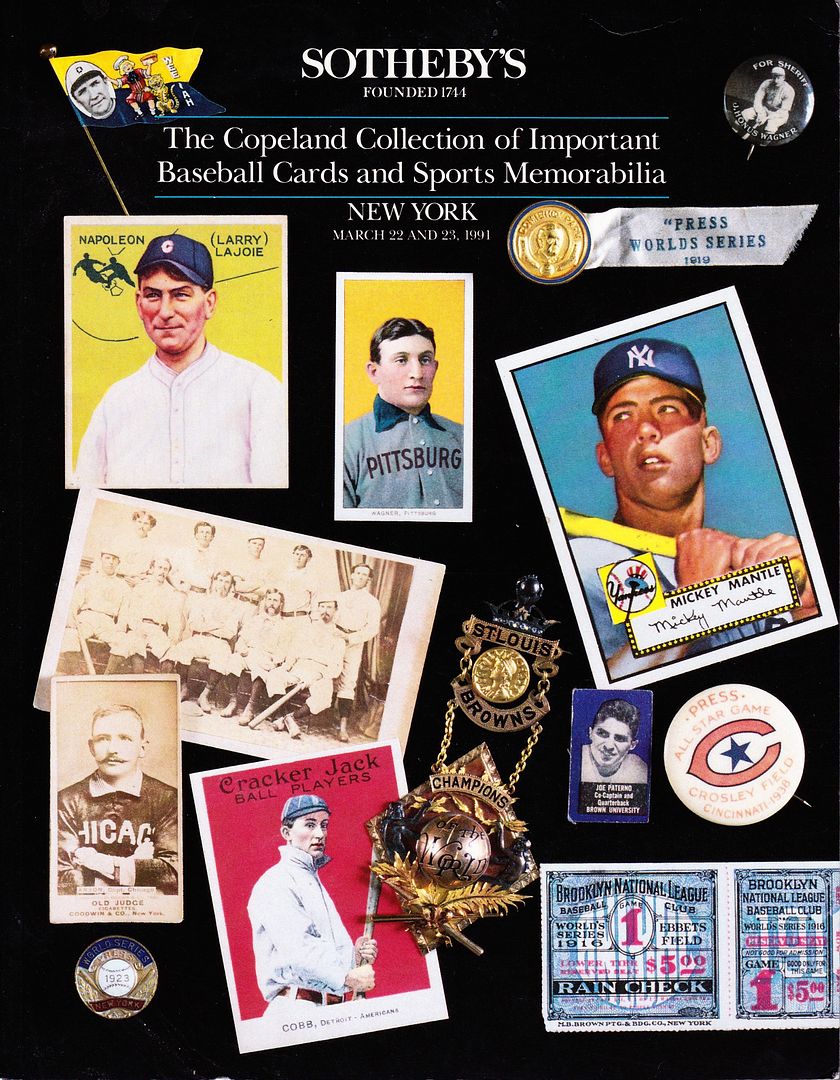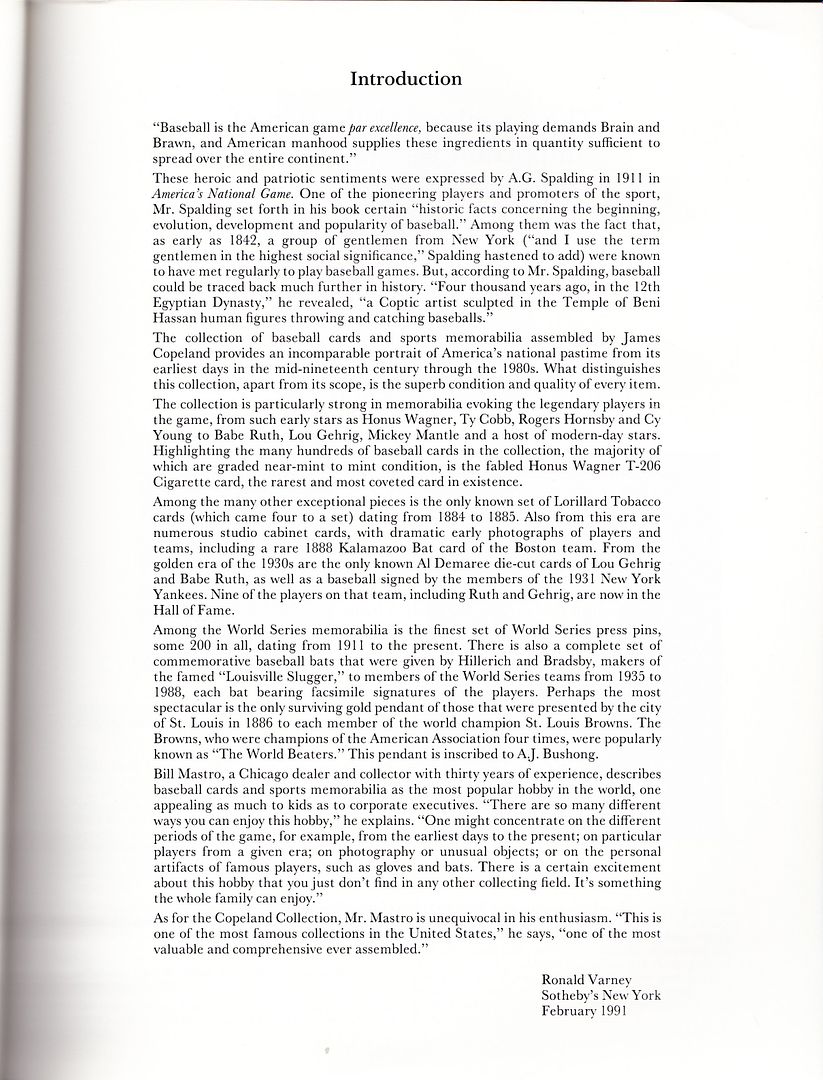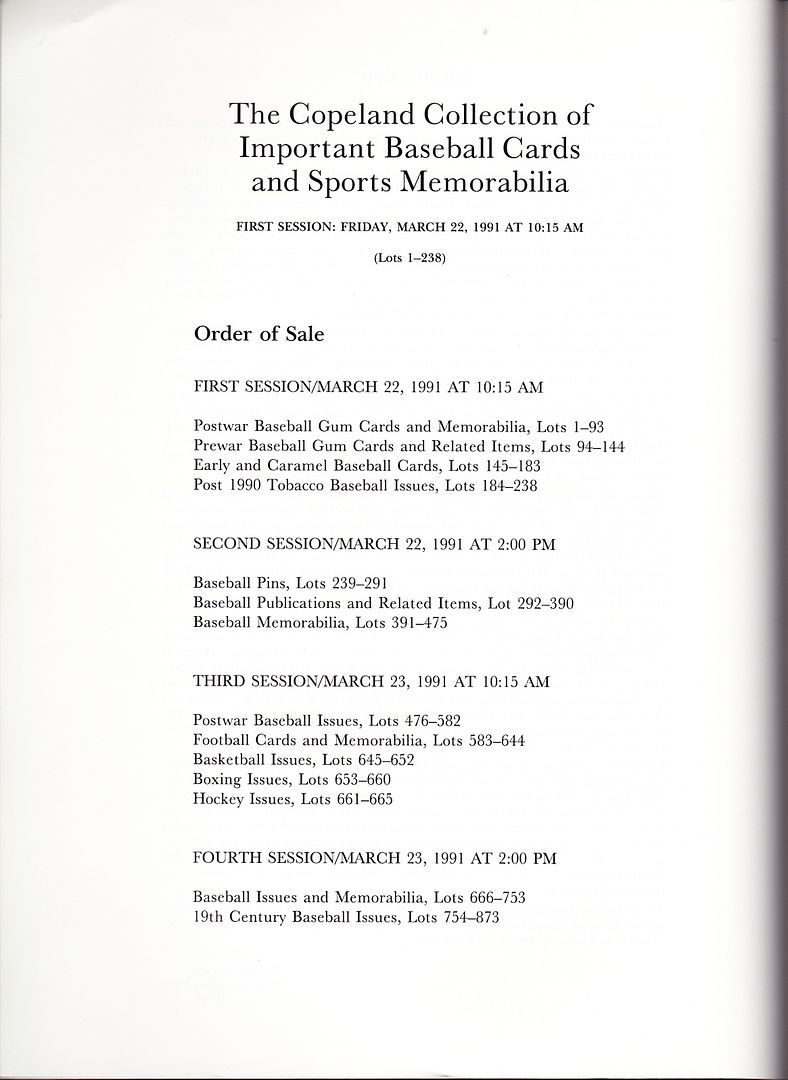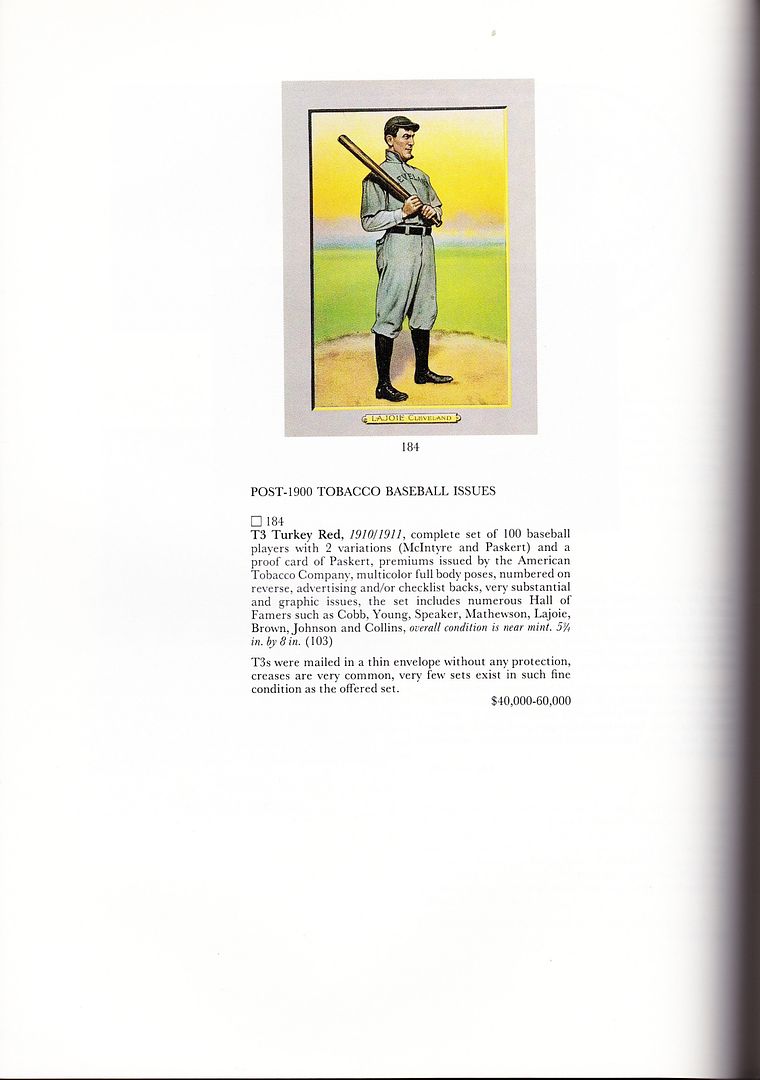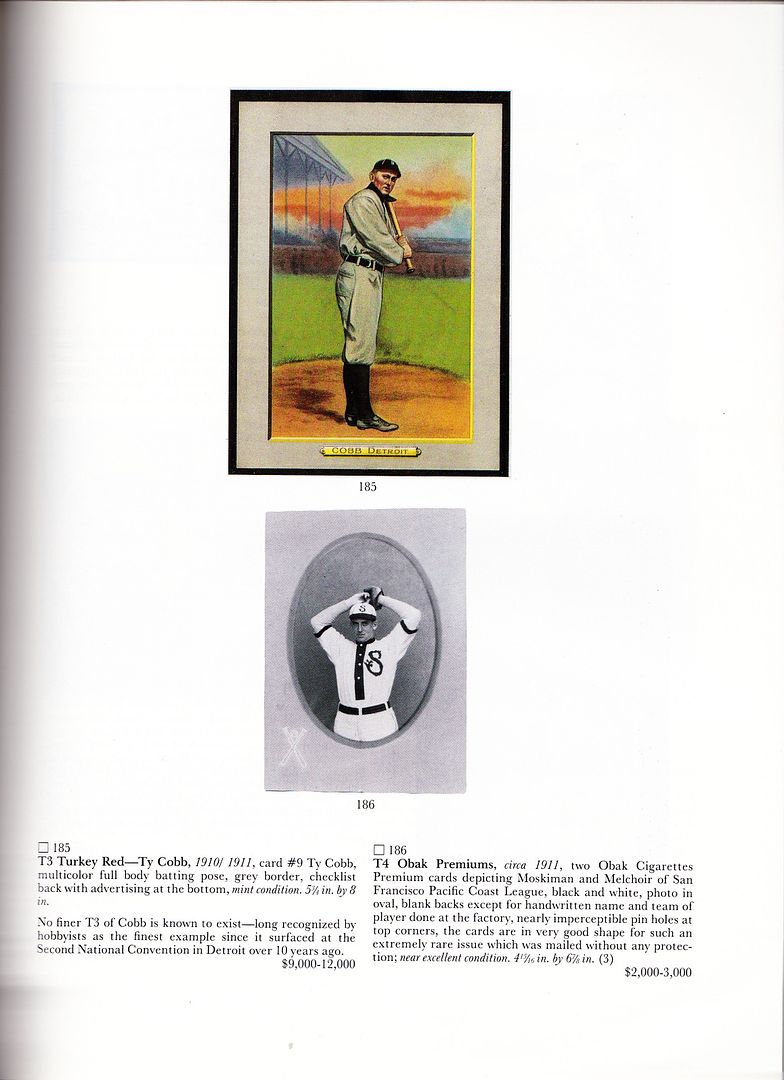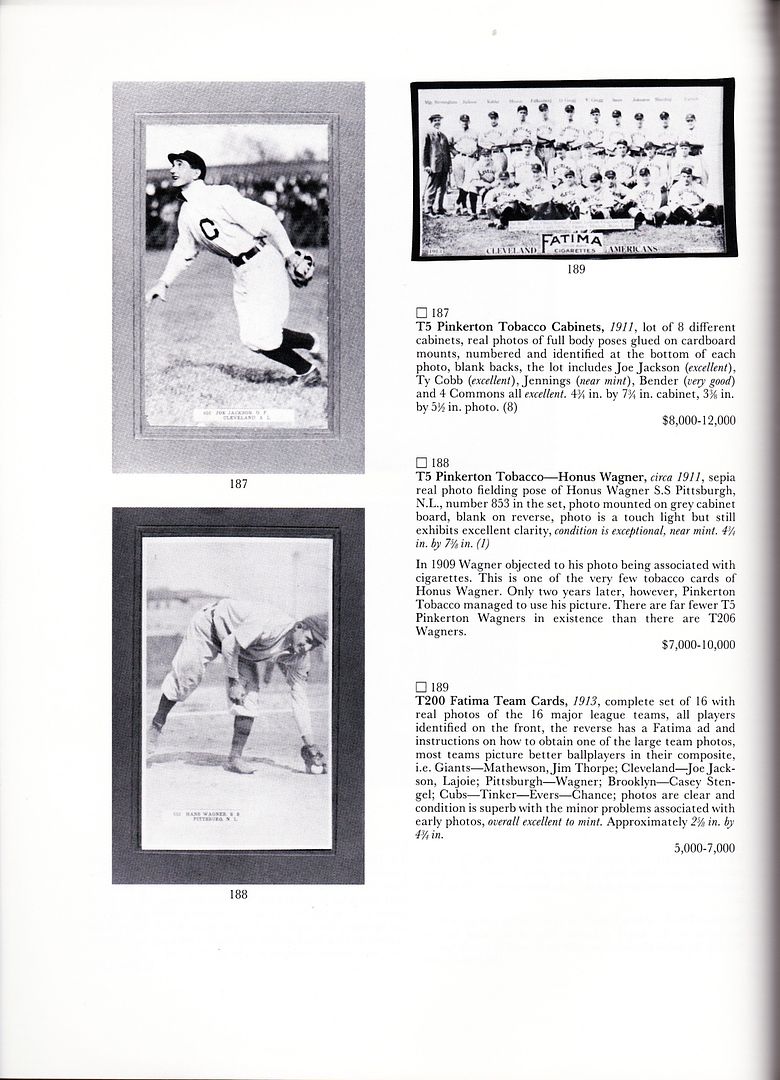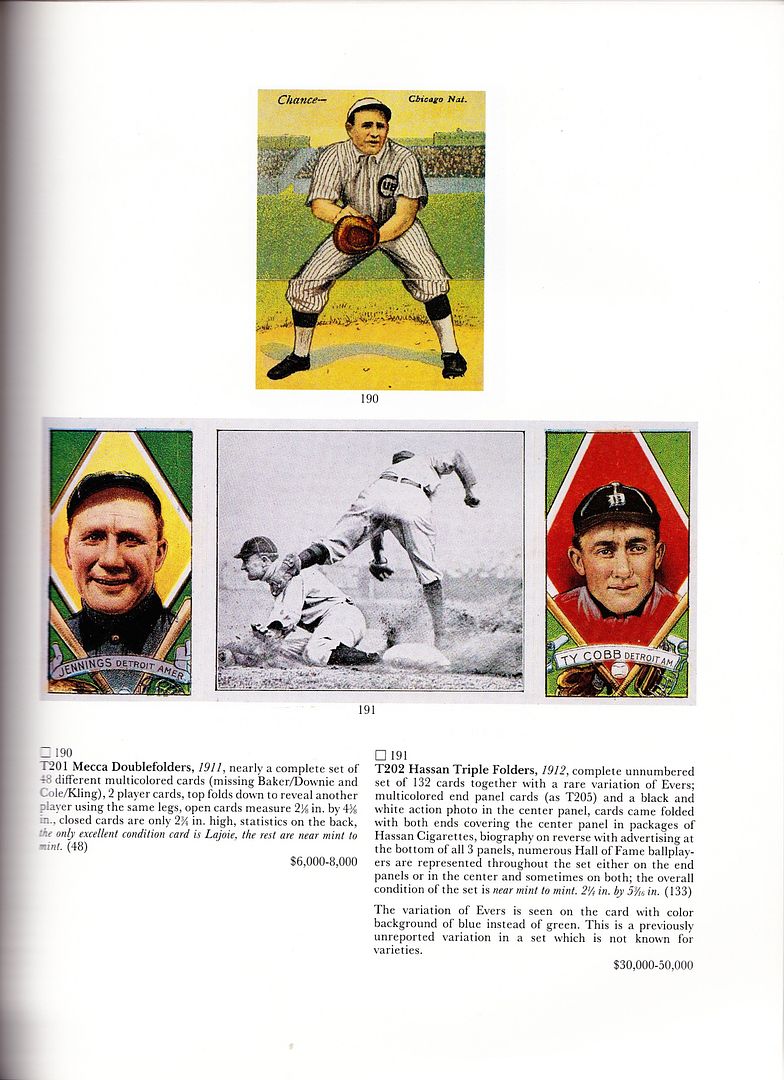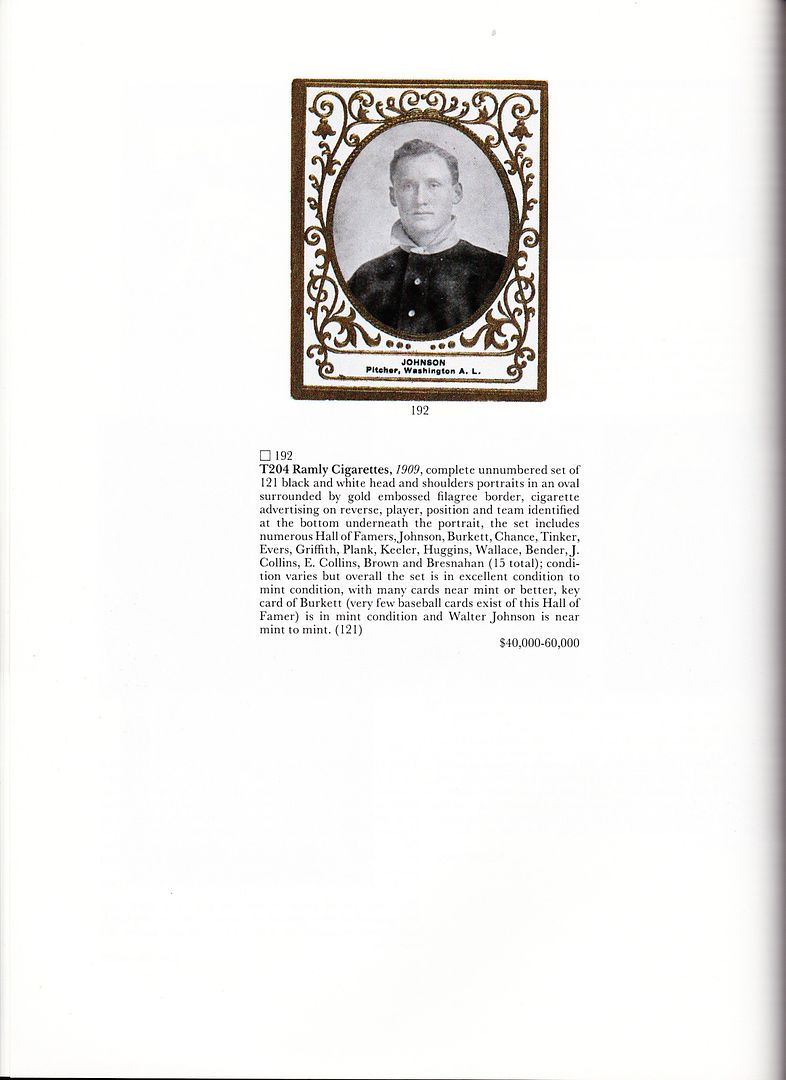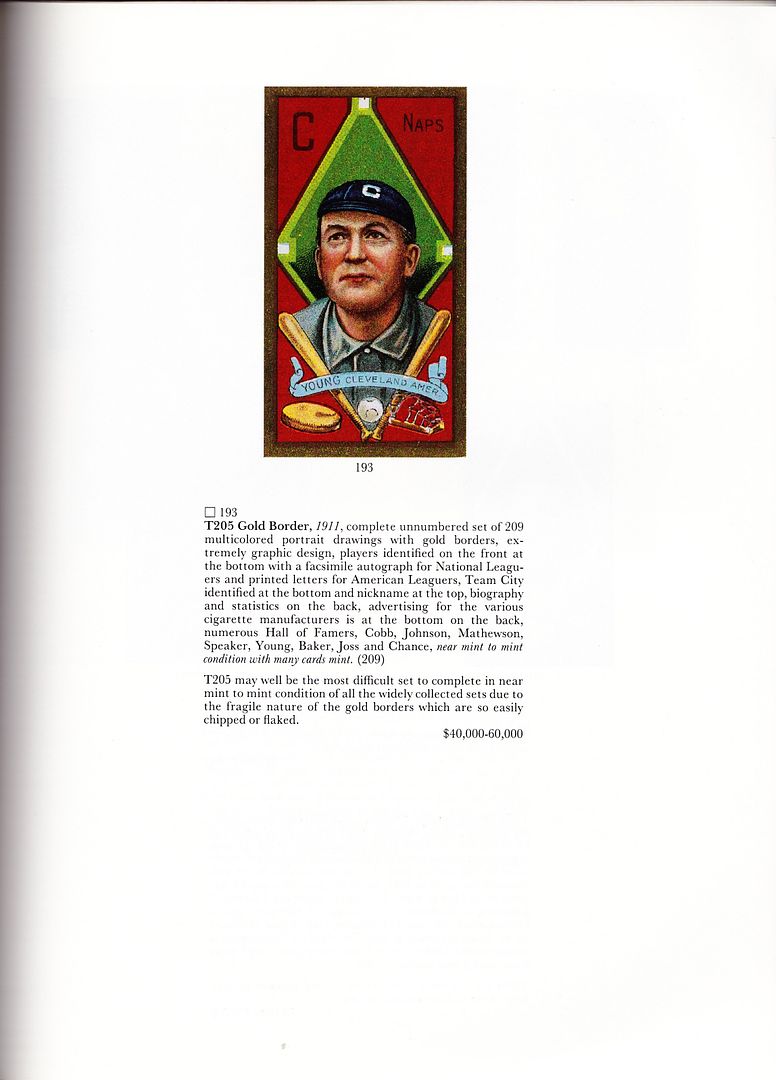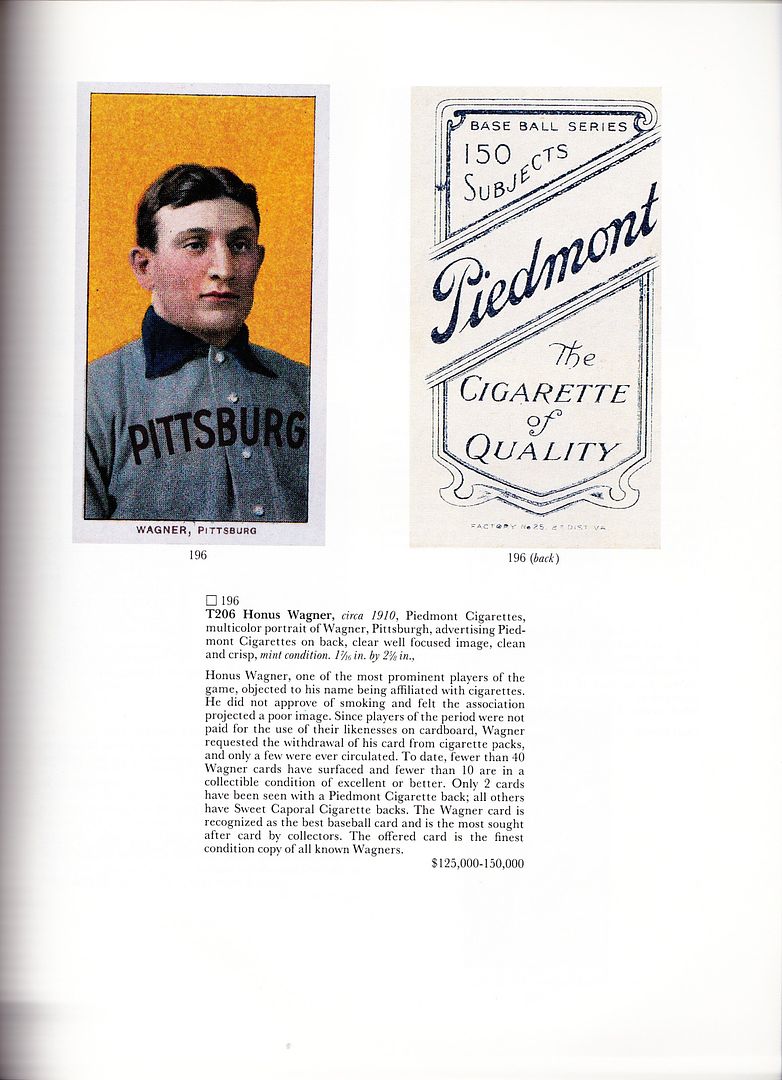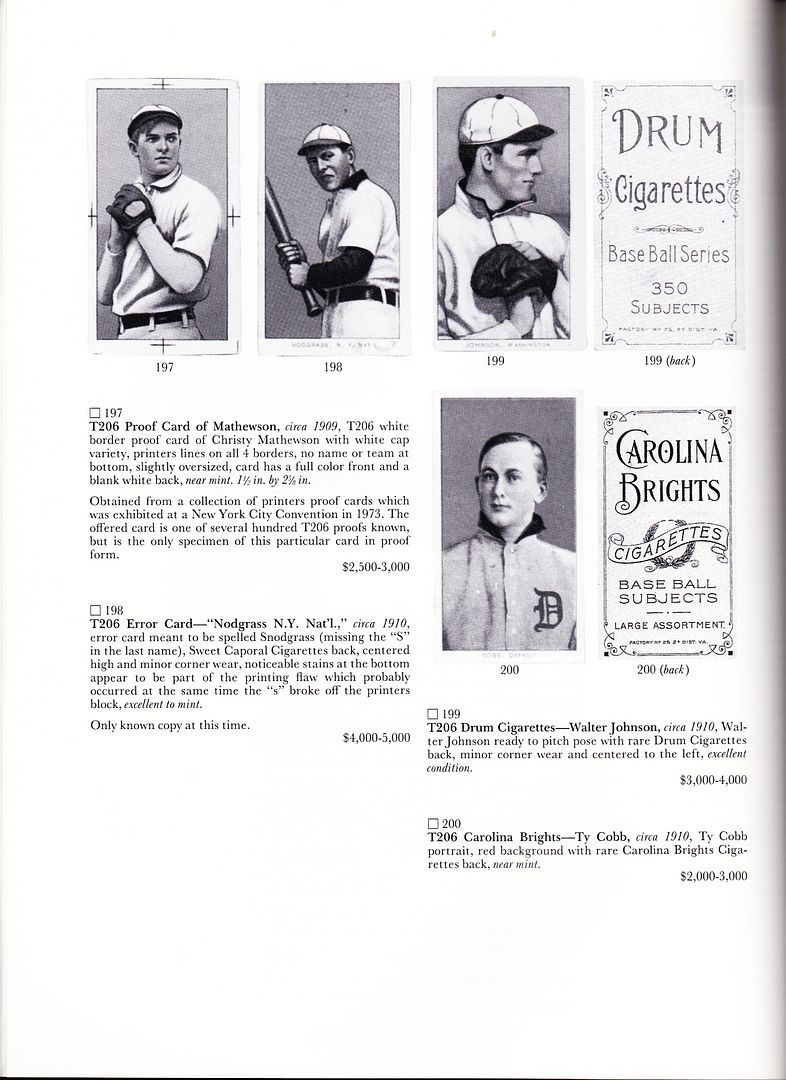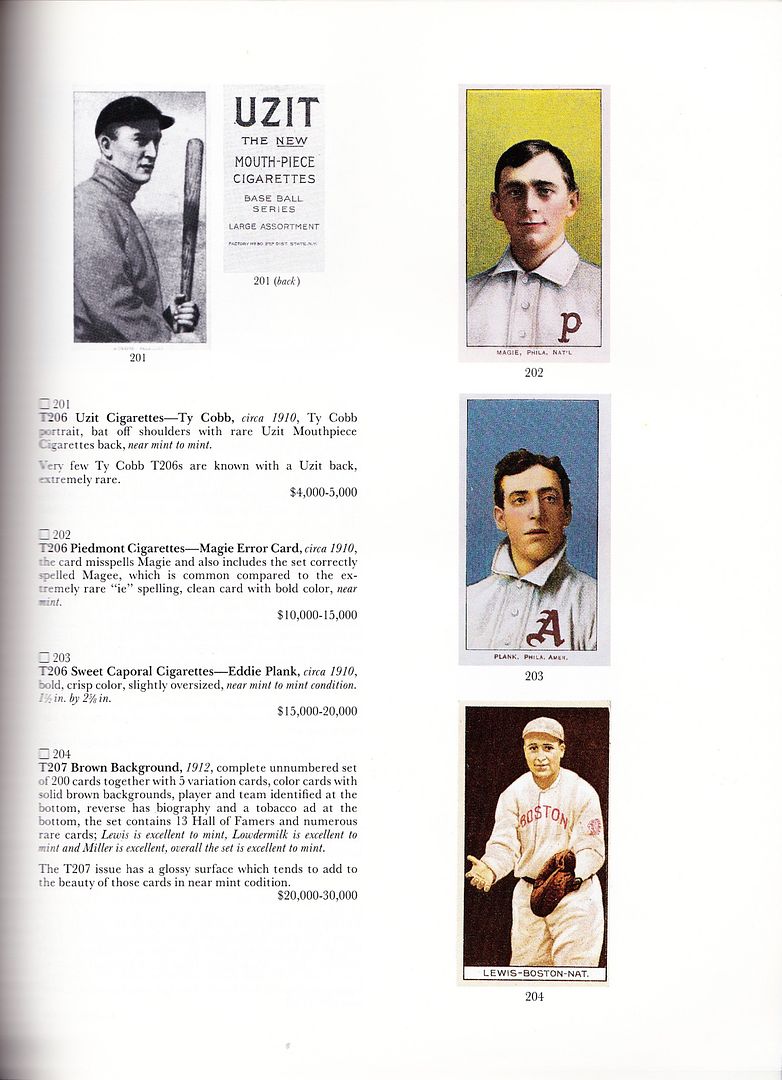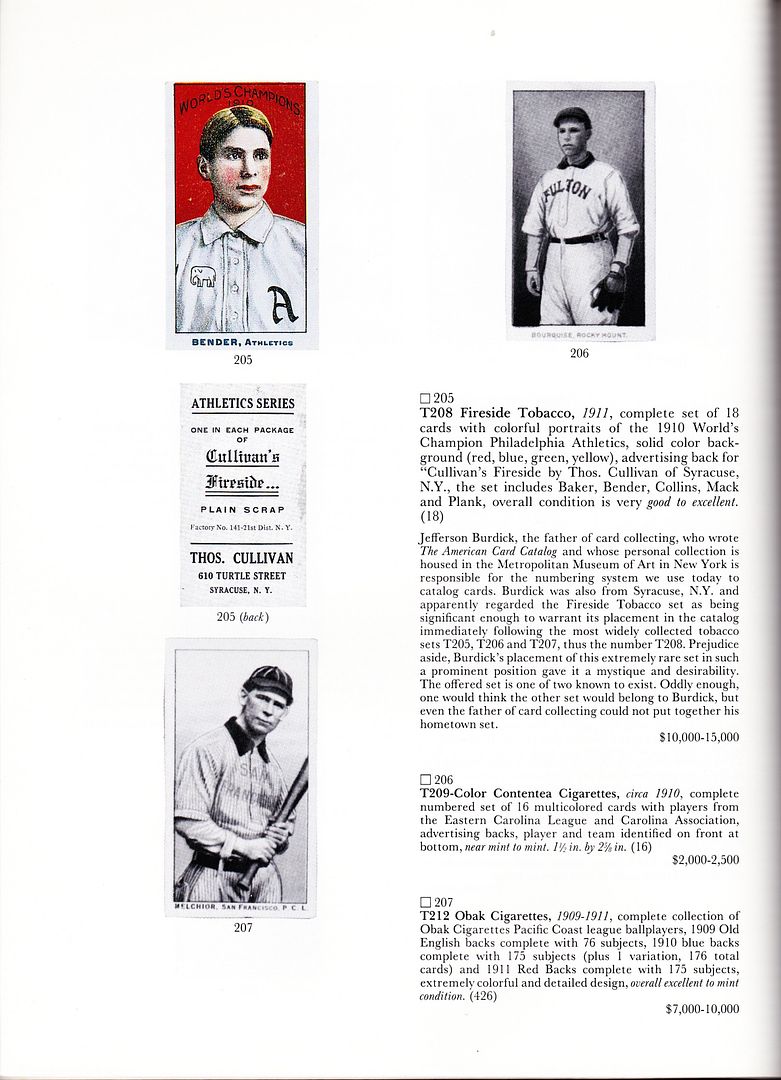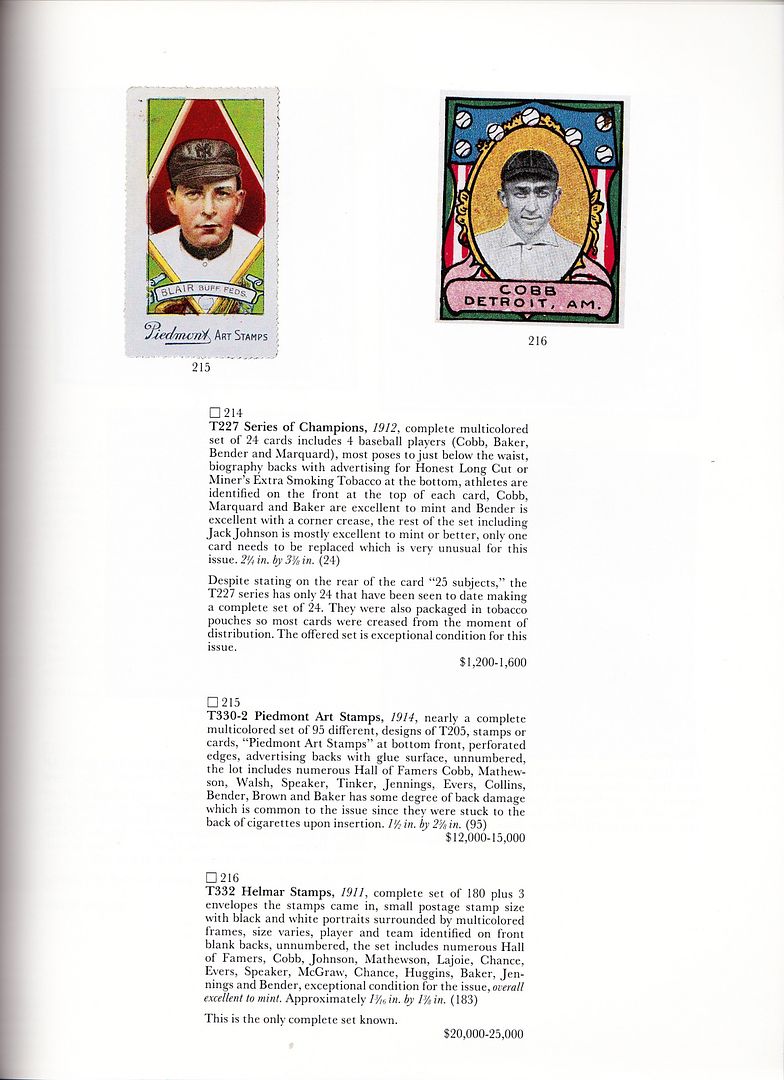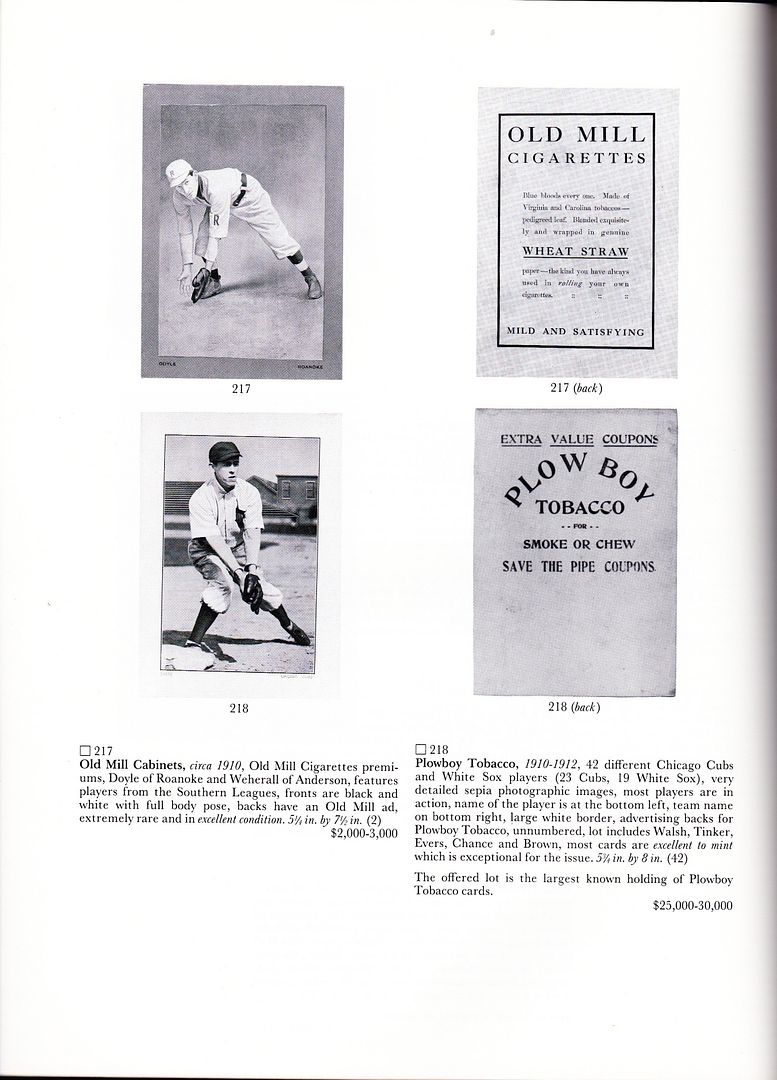Most people here are probably aware that the (in)famous T206 Wagner that Bill Mastro trimmed was bought at auction in 1991 by Wayne Gretzky and Bruce McNall for $451,000, an astonishing price at the time, though a fraction of what it would later sell for. What's less widely known is the scope of the collection that the Wagner card was part of, how it was collected, and how it was sold. It's an interesting story, and I'm going to tell it briefly before posting some of the catalog from that historic auction.
That famous auction was conducted by Sotheby's in New York City on March 22 and 23, 1991, and was formally known as "The Copeland Collection of Important Baseball Cards and Sports Memorabilia". The "Copeland" of the title was James Copeland, who had become rich through a chain of sporting goods stores (Copeland Sports) that he had founded in 1971 with his brother Tom. In the mid-1980s, Jim Copeland suddenly became interested in collecting vintage baseball cards in order to have something to share with his son, and he went all in. With the help of dealer Greg Bussineau and the advice of Bill Mastro, Copeland began buying up all the high-end vintage cards he could find, and he paid whatever he needed to pay to get them. This included the Wagner, which Copeland bought from Mastro in 1988 for $110,000, but Copeland also bought the highest-end examples he could find of basically every other sports card issued before 1981, plus lots of memorabilia, including scorecards and press pins. Money was literally no object; Copeland would simply write a check for whatever it took to get a seller to part with an item. He spent several million dollars on his collection in just a few years. Although the hobby had been booming through the 1980s, the kind of money that Copeland was throwing around was new, and it fueled the spike in card prices in the late 80s.
By 1990, only about five years after he had started collecting, Copeland lost interest and decided to sell his collection. He claimed it was because his son had grown up and was no longer interested in the cards, but I suspect that Copeland had also spent too much on the collection and was overextended financially. (Copeland Sports would eventually go bankrupt in 2006 and was bought by The Sports Authority, which itself went bankrupt a decade later.) He went to Bill Mastro, who in turn went to Sotheby's, since there were then no sports-oriented auction houses capable of handling such a major sale. With Mastro acting as intermediary and advisor, Sotheby's divided the collection into 873 lots and put together a glossy 300-page catalogue, of a type that had never been seen before in the hobby (though it looks almost skimpy compared to many of today's catalogues).
Copeland's collection was quite simply jaw-dropping by any standard. He had pretty much every postwar card set, including test sets and regionals, and complete or near-complete sets of all but the rarest prewar sets, nearly all in near-mint or better condition, including tons of amazing 19th-century material. He had all but a handful of World Series program from 1905 on, a complete run of World Series press pins from 1911 on, and on and on. The amazing thing is that he collected all this in just five years before deciding to sell it. Another amazing thing about the collection from a modern perspective is that the cards were all raw. Remember that the Wagner was the first card ever graded by PSA, after Copeland had sold it; there were some grading services around before then, but Copeland apparently didn't feel a need to use them.
Below I've posted the front cover of the catalogue from this auction, followed by the introduction, the schedule of when the various lots would be auctioned, and the section including all the T cards, with the Wagner in the middle of it. I'm sure some of these cards are, or have been, in the collections of members of this board. (I didn't include the blankets, silks, leathers, and tobacco pins, which are also complete or near-complete sets in amazing condition.) I'll post some other sections of the catalogue later when I have time, if people are interesting.
